Flash Tattoo App
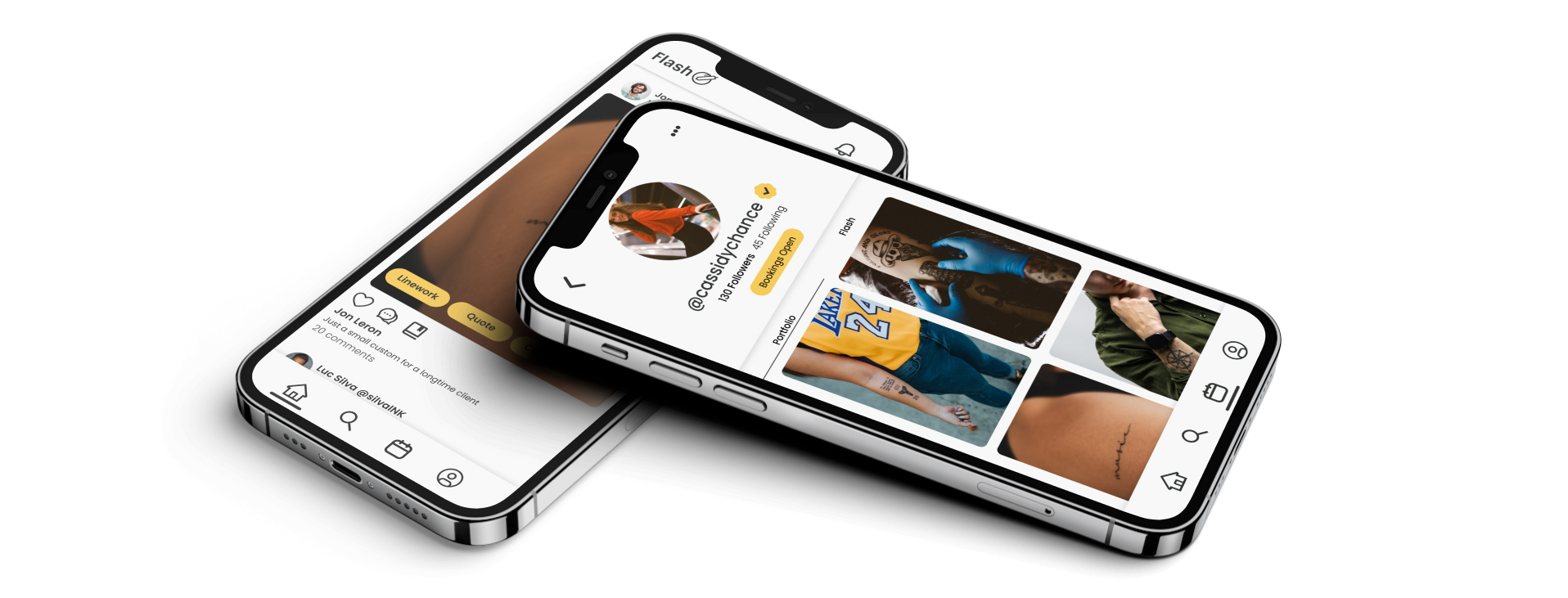
Timeline: 2 Weeks, Role : Idea, UX Designer, UI Designer
Overview
Tattoos are growing in popularity as societal taboos fade, resulting in increased artist promotion and client bookings through social media, particularly Instagram. This widespread presence, however, creates challenges for artists to stand out and potential clients to find suitable artists.
Problem Statement:
Tattoo artists heavily rely on Instagram for business and art promotion. However, the platform's saturation makes it difficult for artists to differentiate themselves from the crowd, leading to client frustration in identifying the right artist for their needs.
Project Goals:
- Establish a user-friendly booking process with a seamless flow.
- Implement features to enhance artist visibility and user searchability.
- Foster the tattoo culture and its vibrant community while addressing the existing challenges.
Design Process
- Discovery
- User Survey
- User Interview
- Journey Map
- Define
- Identify problems and design solutions
- Ideate
- Wireframes
- Style Guides
- High Fidelity Prototype
- Test and Conclude
- User Feedback
- Future Plans
Discovery
To begin my discovery phase I always create research questions as a guide
Research Questions:
- What qualities of a tattoo artist do potential clients value?
- What are the pain points of the current the tattoo booking process for both artist and potential clients?
User Survey
First, to understand the users needs and potential pain points I did a small survey. The results were as follows:
- The most important factor when choosing an artist was style.
- Instagram was the most used method of finding an artist.
- 61% of respondents browse tattoo artists for entertainment most of the time.
- Most artists promoting on the app are independent.
User Interviews
I also did two semi structured user interviews to gain more information to be able to fully answer my research questions. I interviewed two college students. From the interviews I gathered:
- The process can be confusing because artists use different ways to book and mostly use third party apps/services.
- Instagram is frustrating but the algorithm is a valued convenience .
- There is a lack of features that support small artists.
Key Quotes
“ I hate finding a tattoo artist that I like, only to find out they’re in Zurich.”
“I’m not the best with communicating online, it makes me so anxious ”
Customer Journey Map
I compiled my research, made a personaa based on the holistic characteristics of the survey and interview pariticiapnts, and made a user journey map to better understand the current process of booking a tattoo artist on Instagram. Then, after understanding the flow, I am able to design an app that resolves pain points I found.
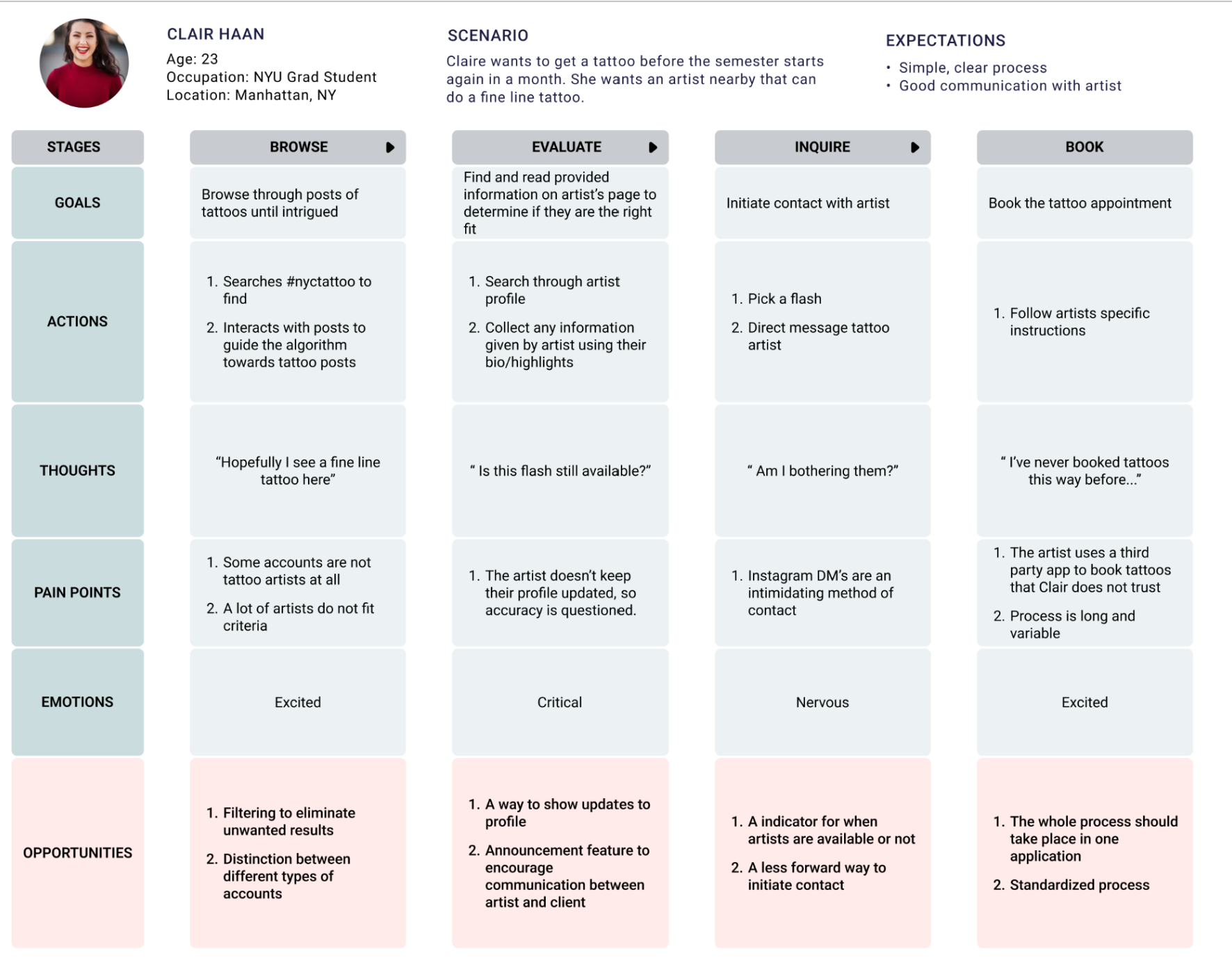
Define
By conducting comprehensive user surveys and conducting in-depth interviews, I was able to ascertain and articulate the fundamental pain points. These insights formed the basis for the design of subsequent solutions.
| Key Problem | Design Solution |
|---|---|
| Lack of information early in the process results in frustration when they later do not meet the clients criteria i.e, location and availability. | Information should be accessible at most points of the process. This can be achieved using previews, status indicators, and captions to the design to increase clarity. |
| Instagram does not support features that help both tattoo artists and potential clients because that is not its point. | Instagram is at first, a social media company, that happens to have the unintended consequence of supporting the tattoo community, to a point. A dedicated service would eliminate distractions and irrelevant information that comes from using Instagram as a primary tool to find tattoo artists. |
| The key features of Instagram are its personalization and social aspect. | The design should maintain the sociality, as well as facilitate discovery perhaps with a discover page,tagging, and suggestions. |
Ideate
Wireframes
I conceptualized an innovative tattoo app that serves as a bridge between artists and clients. Drawing inspiration from successful platforms like Pinterest and Instagram, which are popular among tattoo enthusiasts, I designed the wireframes to blend familiarity with freshness. The wireframes incorporate elements that users are accustomed to, ensuring a seamless experience, while also introducing novel layouts that set the app apart.
This design approach, guided by user research, harmonizes the best of both worlds – comfort and innovation – to empower artists in finding clients and clients in discovering their perfect artists. The wireframes embody a user-centric journey, fostering an intuitive and distinctive platform for the tattoo community
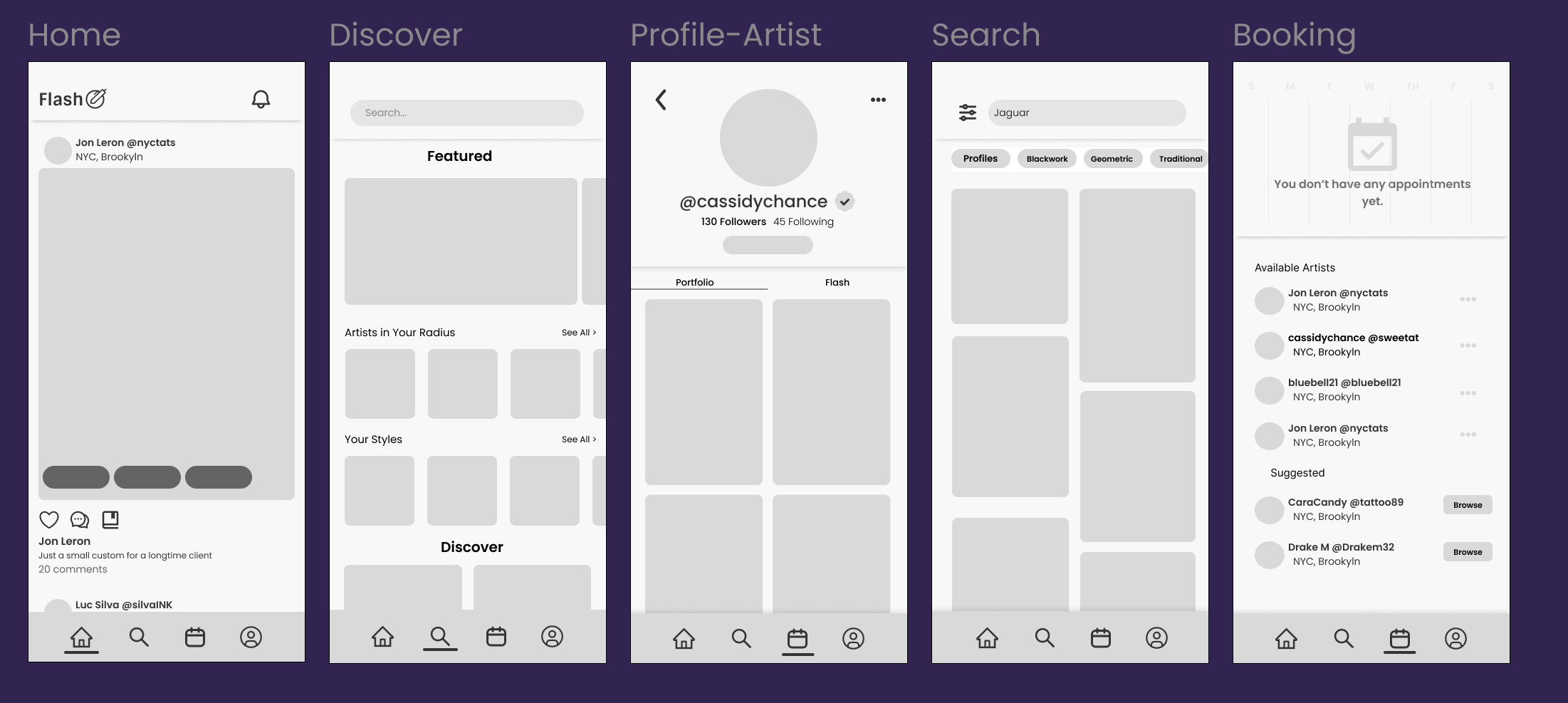
Style Guide
Colors
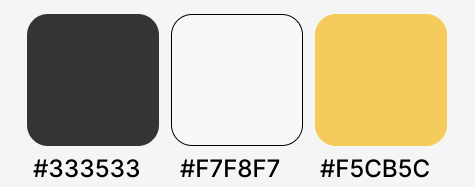
I aimed to capture the essence of a tattoo parlor's neon sign in the design, while maintaining a restrained color palette. The chosen colors intentionally avoid overwhelming the app's content, with the yellow accent shade serving as a recognizable and distinguishing feature.

Font
"Poppins" is a versatile and popular font choice for this app for several reasons. Its clean and modern appearance aligns well with the tattoo artistry theme, ensuring readability across various screen sizes. The font's diverse range of weights offers flexibility in emphasizing different aspects of the app, such as headings or body text. Additionally, "Poppins" is a widely accessible web font, contributing to consistent user experience across devices. Its contemporary style complements the app's effort to balance traditional tattoo aesthetics with a contemporary digital interface.
High Fidelity Prototypes
Figma Prototype Here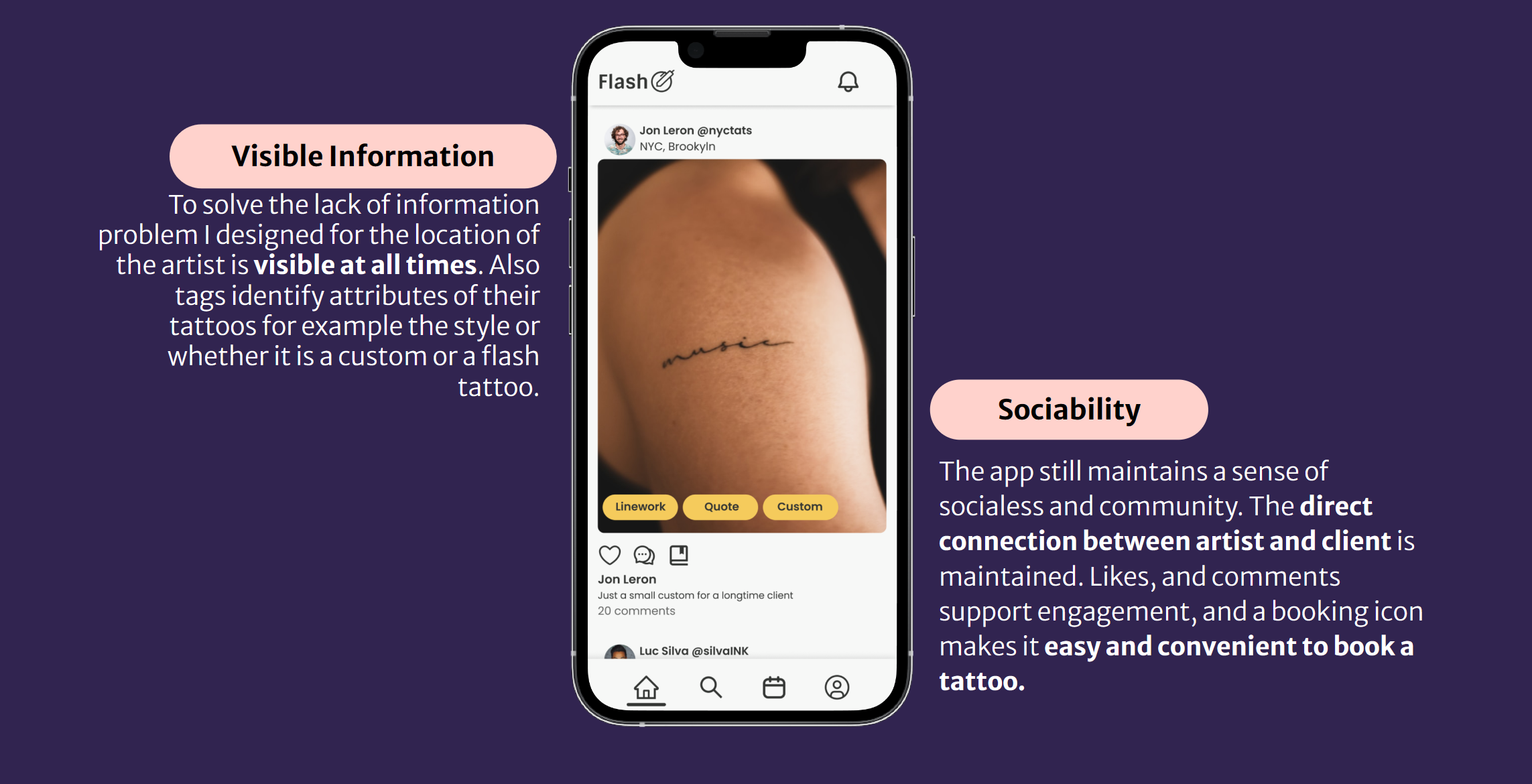
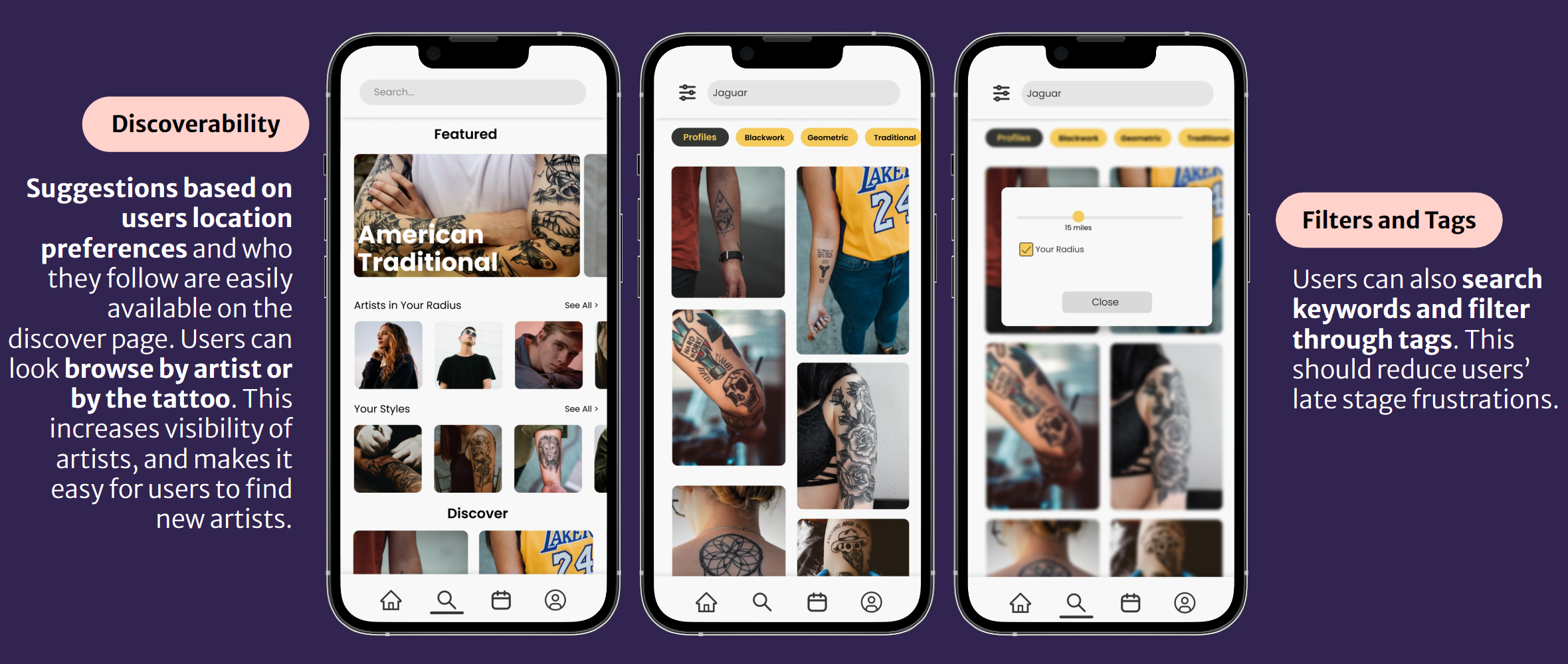
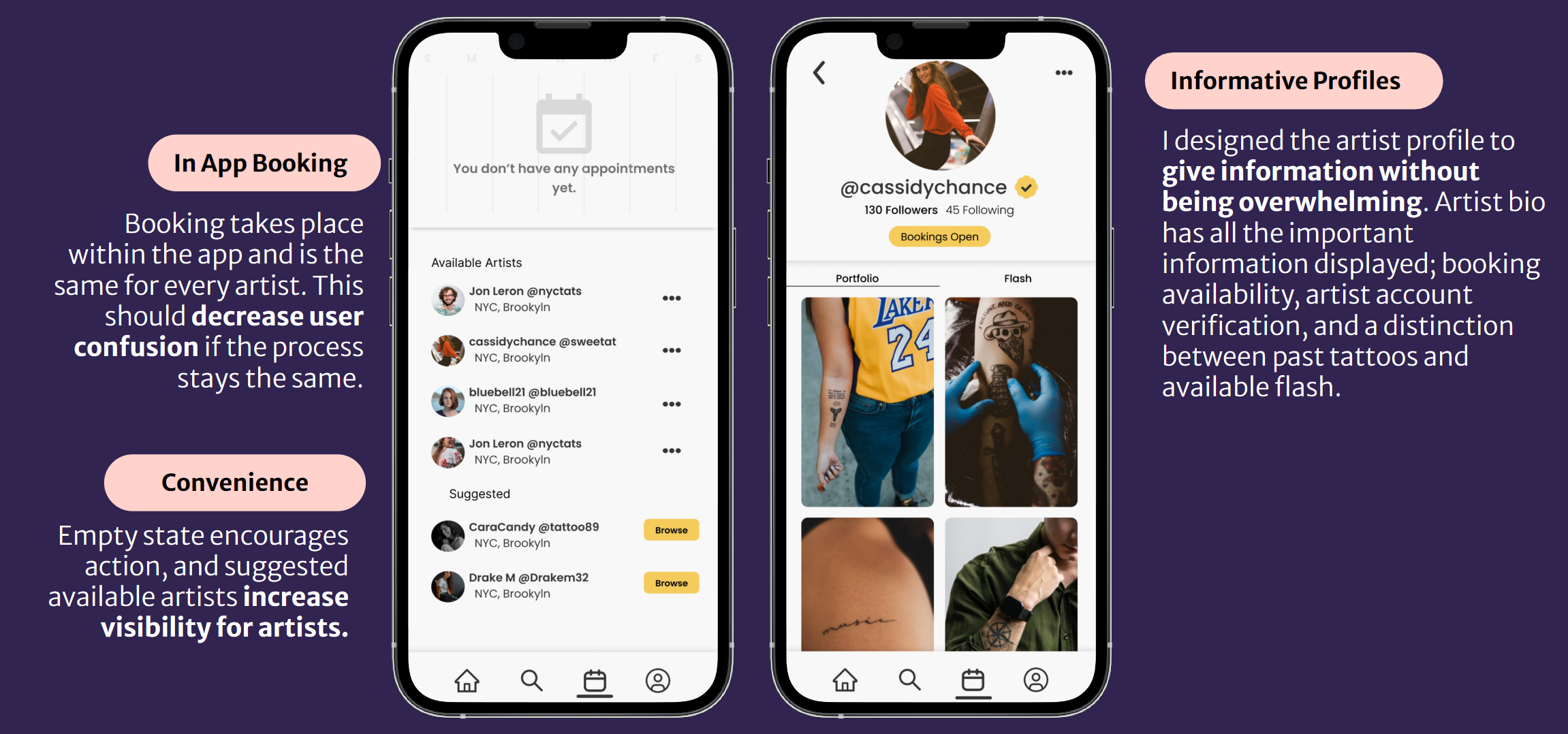
Test and Conclude
This project holds a special place in my heart due to my strong enthusiasm for it. I firmly believe that applications fostering community support have enduring impact and contribute significantly to the world. While working on it, I faced the challenge of wanting to accomplish more within the given timeframe. To overcome this, I remained dedicated to staying aligned with my research question and objectives, ensuring that my focus remained steady. Looking ahead, my plan is to proceed with user interviews, a crucial step to validate and refine the user flow, ensuring that it provides a truly satisfactory experience.